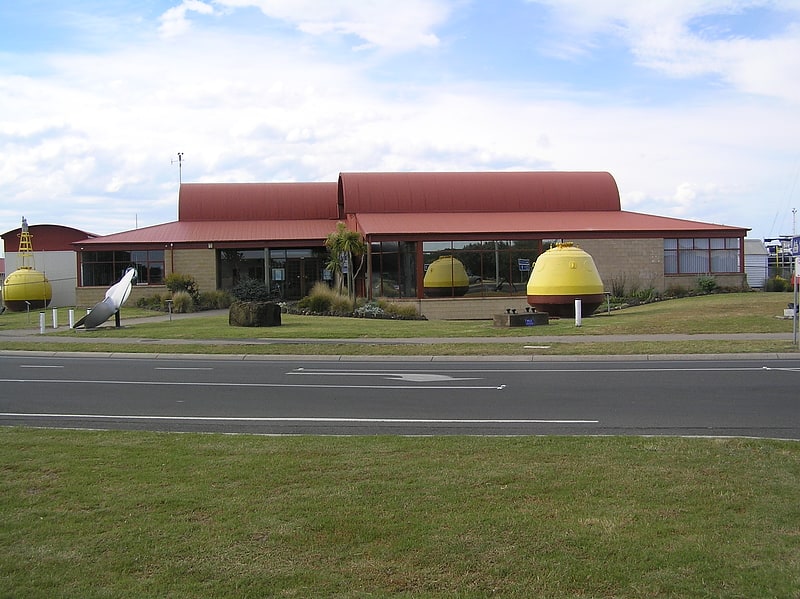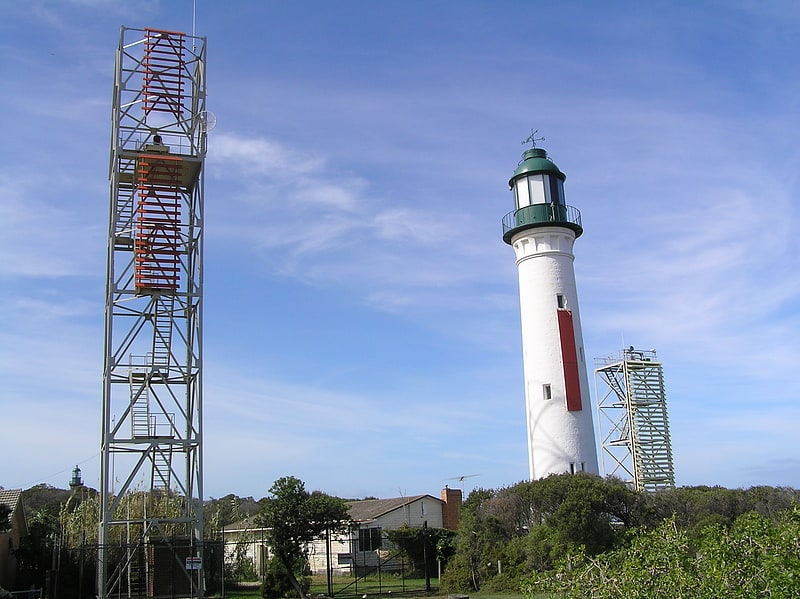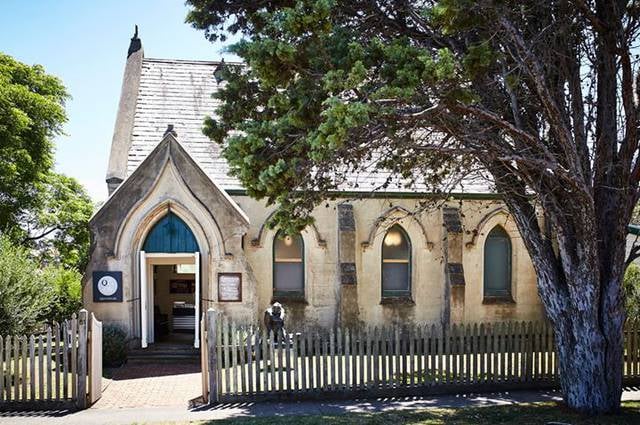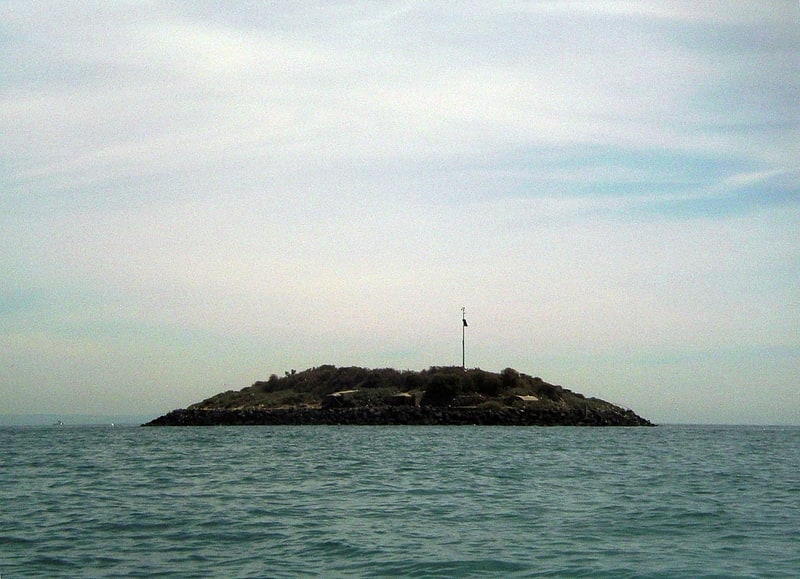Discover 7 hidden attractions, cool sights, and unusual things to do in Queenscliff (Australia). Don't miss out on these must-see attractions: Queenscliffe Maritime Museum, Queenscliff High Light, and Historical Museum. Also, be sure to include Fort Queenscliff in your itinerary.
Below, you can find the list of the most amazing places you should visit in Queenscliff (Victoria).
Table of Contents
Queenscliffe Maritime Museum

Museum in Australia. The Queenscliffe Maritime Museum is a regional maritime museum in the town of Queenscliff at the entrance from Bass Strait to the bay of Port Phillip in Victoria, south-eastern Australia. It lies within walking distance of the Searoad ferry terminal. It covers the maritime history of the Borough of Queenscliffe, southern Port Phillip and the connection with Bass Strait.[1]
Address: 2 Wharf St, 3225 Queenscliff
Queenscliff High Light

Lighthouse in Australia. The Queenscliff High Light, also variously known as the Black Lighthouse, Fort Queenscliff Lighthouse or Shortland Bluff Light, stands in the grounds of Fort Queenscliff in Queenscliff, Victoria, Australia. It is one of three black lighthouses in the world, and the only one in the Southern Hemisphere. Together with the nearby white Queenscliff Low Light, it was built in 1862 to replace the former sandstone lighthouse of 1843 on the same site which was underpowered and deteriorating.
The lightsource is located 40 metres above sea level (focal plane). Depending on the tower's bearing it emits either a fixed light or an occulting signal with an interval of 15 seconds. The black lighthouse is one of four in Queenscliff that are used as a leading line to guide ships through the notoriously dangerous mouth of Port Phillip Bay.[2]
Address: King Street, 3325 Queenscliff
Historical Museum

Museum in Australia. The Queenscliffe Historical Museum is a regional cultural history museum in the town of Queenscliff, Victoria, Australia. The museum is part of the Museum Accreditation Program.[3]
Address: 49 Hesse St, 3225 Queenscliff
Fort Queenscliff

Museum in Australia. Fort Queenscliff, in Victoria, Australia, dates from 1860 when an open battery was constructed on Shortland's Bluff to defend the entrance to Port Phillip. The Fort, which underwent major redevelopment in the late 1870s and 1880s, became the headquarters for an extensive chain of forts around Port Phillip Heads. Its garrison included volunteer artillery, engineers, infantry and naval militia, and it was manned as a coastal defence installation continuously from 1883 to 1946. The other fortifications and armaments around the Heads were completed by 1891, and together made Port Phillip one of the most heavily defended harbours in the British Empire.
The first Allied shots of World War I were fired when a gun at Fort Nepean fired across the bow of the German freighter Pfalz, as she was attempting to escape to sea. The orders to fire came from Fort Queenscliff. The same gun, with a different barrel, also fired the first Allied shot of World War II. By 1946 coastal artillery was outmoded, and the Fort became home of the Army Command and Staff College. After the three Service Staff Colleges were combined into the Australian Defence College in Canberra, it became the base for Army's Soldier Career Management Agency in 2001.
Fort Queenscliff is located in the Borough of Queenscliffe, some 106 km from Melbourne, on the western side of the entrance to Port Phillip. It occupies an area of 6.7 hectares on high ground known as Shortland's Bluff and overlooks the shipping lanes leading to Melbourne and Geelong. The Fort is a superb example of the defences that existed around the coastline of Australia from colonial times through to the end of the Second World War. Considerable restoration has been accomplished at Fort Queenscliff in recent years, including the recovery and refurbishment of some of the original guns, the restoration of historic buildings, and the development of a comprehensive indoor display and archival centre. Fort Queenscliff has been classified by the National Trust and entered in the Register of the National Estate.
A museum was established at Fort Queenscliff in 1982 to show the significance of the Fort in the local, state and national context and to provide a centre for historical research.[4]
Queenscliff Low Light

Lighthouse in Australia. The Queenscliff Low Light, also known as the Queenscliff White Lighthouse, is a lighthouse in the township of Queenscliff in the Borough of Queenscliffe, Victoria, Australia, at the eastern end of the Bellarine Peninsula. It stands inside the entrance to Port Phillip from Bass Strait, on the lower slope of the Queenscliff Peninsula overlooking the ’Rip”, a stretch of water considered one of the ten most treacherous navigable passages in the world. It is operated by the Port of Melbourne Corporation.[5]
Queenscliff Gallery & Workshop - QG&W

Museum, Art gallery, Classes and workshops, Shopping
Address: 81 Hesse St, 3225 Queenscliff
South Channel Fort

Artificial island. South Channel Fort, also known as South Channel Island, is a 0.7 ha artificial island in southern Port Phillip, Victoria, Australia, 6 km north-east of the town of Sorrento. It was part of a network of fortifications protecting the narrow entrance to Port Phillip.
It is 122 m long, 76 m wide, and is 6.4 m above sea-level, and was built on a shoal, close to the main shipping channel of the bay, with 14,000 tonnes of bluestone boulders, concrete and sand. It was constructed during the 1880s as part of a defensive strategy to protect and control access by sea to Port Phillip and the cities of Melbourne and Geelong. Its principal purpose was to illuminate the main shipping channel at night, and to explode mines under attacking ships which had breached the defences at Port Phillip Heads. The fort still contains remnants of its original military equipment, including disappearing guns.[6]